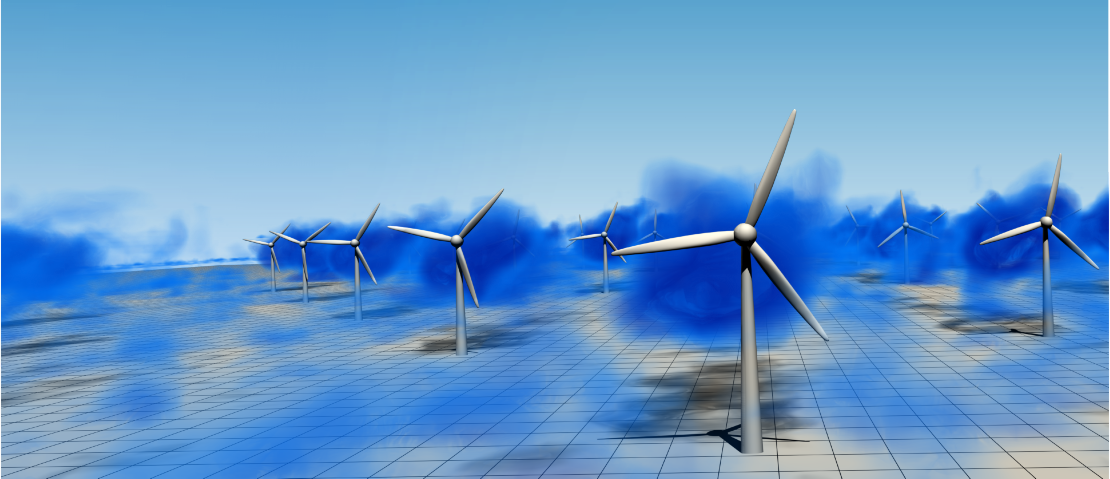Last month, the Netherlands, Germany, Belgium and Denmark announced their intention to increase the number of wind turbines in the North Sea by a factor of ten. The team led by Dr Richard Stevens, a Featured Scientist at the University of Twente, is studying the complexities of wind flow that can occur among so many turbines. Using newly developed computer models, they calculate the optimal layout for new wind farms such as those planned in the North Sea.
Wind turbines generate electricity by harnessing energy from the wind. In doing so, they reduce the wind speed in the wake of the turbine. This means that a wind turbine positioned directly behind another wind turbine will generate less power. “With two wind turbines these processes are manageable, but when you have hundreds, things become a lot more complicated,” says Stevens.
Complex flow fields
In a recent publication, Stevens’ team studied the structures of flow fields using models that had not previously been applied to wind farms of over 100 turbines. The researchers’ use of the model is therefore unique.
The simulations show that the best results are achieved by alternating the turbines both horizontally and vertically. A pattern like this will mean that two rows of wind turbines are never positioned directly behind each other or at the same height. “But we have also shown that this method has a great deal of potential when it comes to studying other wind farm designs in the future,” Stevens adds.
 Image by Srinidhi N. Gadde
Image by Srinidhi N. Gadde
Increasingly tall turbines
In another recent study, Stevens’ team focused on modelling the flow in atmospheric boundary layers. “Wind speed and wind direction change with altitude. The flow directly above the ground is straightforward to measure and therefore relatively well understood. At higher altitudes, the flow is harder to measure and used to be seen as less relevant,” Stevens explains. But as the height of wind turbines increases, people’s attitudes are changing.
“The heights being reached by the latest wind turbines means that they are entering a part of the atmospheric boundary layer, where conditions are very different from closer to the ground,” says Stevens. Stevens’ new model improves the scientific understanding of flow dynamics in the atmosphere. “With this model, we can not only better predict the yield of wind farms, but also improve weather and climate models, for example.”
More information
Dr Richard Stevens is an associate professor in the Physics of Fluids Group led by Prof. Dr Detlef Lohse. The group is part of the Faculty of Science and Technology and of Max Planck Center Twente and the MESA+ Institute. He is also one of the University of Twente's Featured Scientists.
Stevens’ team recently had articles published in two scientific journals: Renewable Energy and Proceedings of the National Academy of Sciences (PNAS). The respective titles of these publications are ‘A three-dimensional dynamic mode decomposition analysis of wind farm flow aerodynamics’ and ‘Vertical structure of conventionally neutral atmospheric boundary layers’. Both are available online.
DOI: 10.1016/j.renene.2022.03.160
DOI: 10.1073/pnas.2119369119






